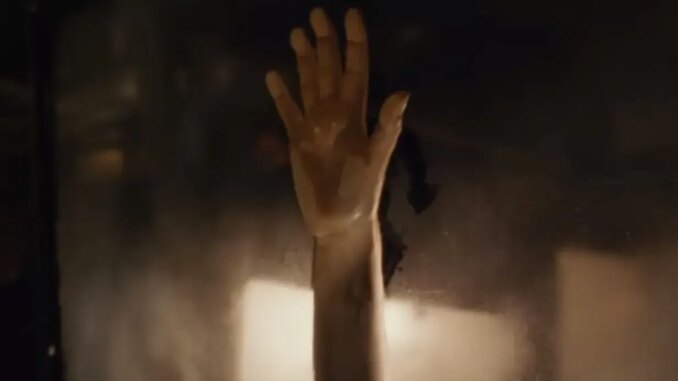
The Ghost of a Hand: Reflections on Time, Tragedy, and the Enduring Power of a Car Window
The Titanic. The name itself evokes a sense of immense scale, both in physical grandeur and historical consequence. We picture the opulent ballrooms, the bustling decks, and the icy grip of the Atlantic that brought it all to a catastrophic end. Beyond the iconic image of the ship, however, lie countless smaller stories, fragments of individual lives frozen in time. And, remarkably, some of those fragments persist, defying the corrosive forces of nature and the passage of decades. Among them is the purported handprint on the window of a 1912 Renault Type CB Coupe de Ville, a haunting testament to a life lost in the deep, now stubbornly clinging to existence two decades into the 21st century.
The Renault, recovered from the ocean floor, is a chilling exhibit in the Titanic Museum in Branson, Missouri. Encased in a climate-controlled glass enclosure, it stands as a somber reminder of the disaster. And there, on one of its windows, is the faint but visible outline of a hand, a ghostly impression that sparks a visceral reaction in anyone who beholds it. Whether it is truly the last act of a drowning passenger, grasping desperately for purchase as the car plunged into the frigid water, is a matter of speculation and debate. Scientific analysis is inconclusive, the origin of the print shrouded in the murk of the ocean and the layers of time. Yet, its presence is undeniable, and its impact profound.
The handprint transcends its potential forensic value. It becomes a symbol, a conduit to the human drama that unfolded on that fateful night. It allows us to connect, however tenuously, with the anonymous souls whose stories were swallowed by the sea. We can imagine the panic, the desperation, the chilling realization that escape was impossible. The handprint becomes a tangible representation of that final moment, a visceral echo of fear and the will to survive.
The persistence of the handprint, enduring for over a century since the tragedy and twenty years into the new millennium, speaks to something deeper than the chemical composition of glass or the preservation techniques of a museum. It speaks to the enduring power of memory and the human need to connect with the past. We are drawn to these tangible links to history, these physical manifestations of events that shaped our world. They provide a sense of continuity, reminding us that we are part of a larger narrative, a tapestry woven with the threads of both triumph and tragedy.
Furthermore, the continued existence of the handprint forces us to confront our own mortality. We see the fragile nature of human life, the ease with which it can be extinguished, and the fleeting nature of our own existence. It is a sobering reminder that even the most technologically advanced creations can be humbled by the forces of nature, and that even the grandest ambitions can be shattered in an instant. The handprint, in its quiet defiance of time, compels us to consider our legacy, the mark we will leave on the world, however ephemeral it may be.
Of course, the skeptic might dismiss the significance of the handprint. They might argue that it is simply a mark, a stain, an accidental smudge magnified by legend and romanticized by grief. But even if that is the case, the power of the handprint lies in the meaning we ascribe to it. It is a blank canvas onto which we project our own emotions, our own anxieties, and our own hopes. It is a reminder that history is not just a collection of facts and dates, but a living narrative shaped by human interpretation and fueled by the enduring power of the human spirit.
In conclusion, the famous Titanic car handprint, a silent witness to a maritime tragedy, endures as a potent symbol in the 21st century. It transcends its material form, becoming a tangible link to the past, a reminder of human vulnerability, and a testament to the enduring power of memory. Whether it is the literal imprint of a desperate soul or a serendipitous mark imbued with meaning, the handprint continues to resonate, drawing us closer to the human story behind the Titanic and forcing us to reflect on our own place in the vast and ever-evolving narrative of history. Its enduring presence is a poignant reminder that even in the face of unimaginable tragedy, the human spirit, like the ghost of a hand on a car window, refuses to be forgotten.
